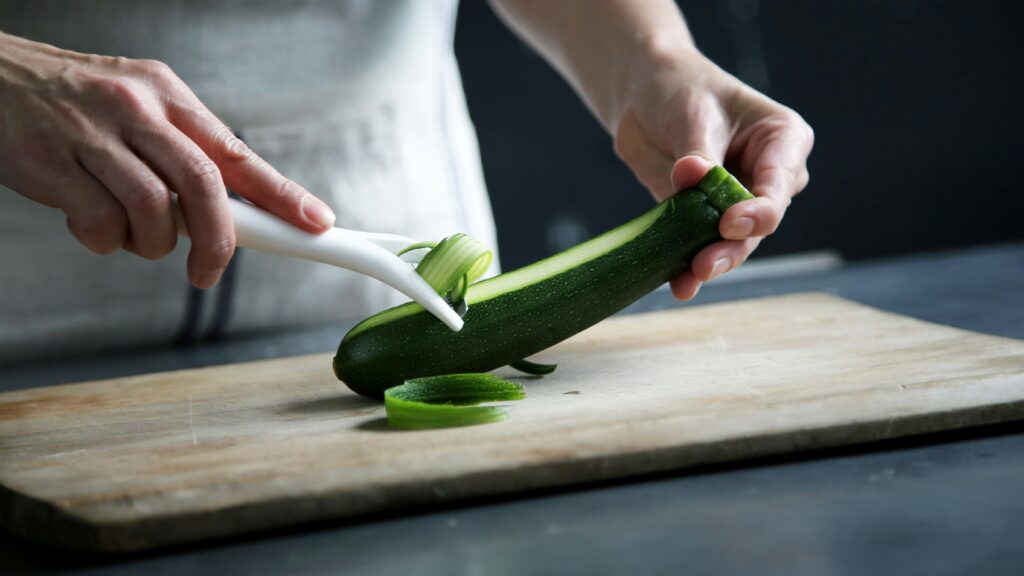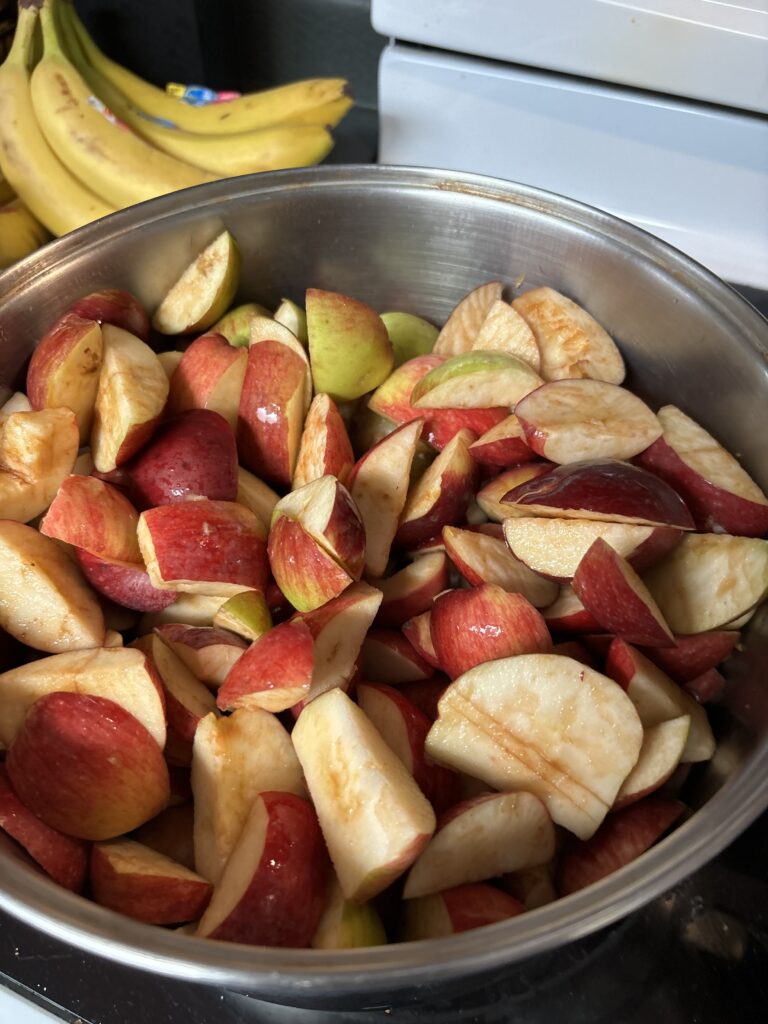Roasted zucchini is a quick, versatile dish that’s both delicious and nutritious. Whether you’re preparing it as a side dish, adding it to salads, or serving it with your favorite protein, roasted zucchini can elevate any meal with its mild, slightly sweet flavor. In this guide, we’ll dive deep into how to perfect your roasted zucchini, explore spice options to suit different palates, and suggest complementary dishes for the ultimate pairing.
Why Roast Zucchini?
Zucchini is a summer squash that’s low in calories and high in fiber, vitamins, and minerals. While it’s commonly grilled, steamed, or sautéed, roasting zucchini brings out a rich, caramelized flavor. Roasting creates a slightly crispy exterior and tender interior, making it more flavorful and appealing than other cooking methods.

Choosing Your Zucchini
Fresh, firm zucchini with a glossy skin works best for roasting. Look for small to medium-sized zucchini, as larger ones can be more watery and sometimes a bit bitter. If the zucchini has seeds that are starting to get large, scoop them out before roasting for a more uniform texture.
How to Roast Zucchini: The Basics
1. Preheat the Oven: Preheat your oven to 425°F (220°C). A higher temperature helps to achieve a nice caramelization and prevents sogginess.
2. Cut the Zucchini: Slice the zucchini into even rounds, sticks, or half-moons, about ¼ to ½ inch thick. This thickness allows the zucchini to cook through while still holding its shape.
3. Seasoning: Toss the zucchini slices in a bit of olive oil to coat, then add salt and pepper. From here, you can choose to keep it simple or explore different spices.
4. Roast: Spread the zucchini slices in a single layer on a baking sheet lined with parchment paper. Avoid overcrowding, as this helps prevent steaming. Roast for 15-20 minutes, flipping halfway, until golden brown.
Spice Options to Elevate Your Roasted Zucchini
1. Classic Italian Herbs:
– Spices: Oregano, thyme, rosemary, and basil.
– Tip: Mix with a sprinkle of garlic powder and Parmesan for an Italian-inspired side that pairs well with pasta, chicken, or seafood.
2. Middle Eastern Flavors:
– Spices: Sumac, za’atar, and cumin.
– Tip: Add a splash of olive oil and a squeeze of lemon juice once the zucchini is roasted. Serve with grilled meats or a yogurt-based dipping sauce for a Mediterranean twist.
3. Smoky Paprika and Chili:
– Spices: Smoked paprika, chili powder, and a dash of cayenne.
– Tip: This spice mix is great if you enjoy a kick of heat. It pairs well with grilled steak or a robust vegetarian main like lentils or roasted chickpeas.
4. Garlic and Parmesan:
– Spices: Garlic powder, salt, black pepper, and Parmesan.
– Tip: The savory combination of garlic and Parmesan adds depth to roasted zucchini. Serve with marinara or as a side to meatball dishes.

5. Lemon Pepper and Dill:
– Spices: Lemon zest or lemon pepper, fresh dill, and a bit of garlic powder.
– Tip: This combination is light and bright, making it perfect alongside fish or grilled chicken. A sprinkle of feta cheese also complements these flavors.
6. Asian-Inspired:
– Spices: Soy sauce, sesame oil, garlic powder, and a sprinkle of red pepper flakes.
– Tip: Finish with toasted sesame seeds after roasting. Serve with rice or noodles and your choice of protein.
7. Curry and Turmeric:
– Spices: Curry powder, turmeric, and ground coriander.
– Tip: This earthy blend is delicious with lentil-based dishes, coconut rice, or grilled chicken. Adding a bit of coconut milk can give an extra creamy touch.
8. Herbes de Provence:
– Spices: Thyme, rosemary, lavender, marjoram, and fennel.
– Tip: This French blend pairs beautifully with lamb, pork, or chicken. Finish with a drizzle of balsamic glaze for an added sweetness.
Serving Suggestions: What Goes Well with Roasted Zucchini?
1. As a Side Dish with Proteins:
– Chicken: Pair roasted zucchini with grilled, baked, or roasted chicken. The mild flavor complements the chicken, especially if you’ve used Italian or Middle Eastern spices.
– Fish: Serve with flaky fish like salmon, cod, or trout. Lemon-pepper zucchini is especially delightful alongside seafood.
– Beef or Lamb: Serve smoky paprika or curry-spiced zucchini with grilled steaks or lamb chops.

2. With Grains and Legumes:
– Quinoa, Couscous, or Rice: A bowl of fluffy grains topped with roasted zucchini, a drizzle of olive oil, and some fresh herbs makes for a filling, balanced meal.
– Lentils: Curry or cumin-spiced zucchini goes well with lentils, adding a smoky flavor that complements earthy legumes.
3. In a Salad:
– Add roasted zucchini to a bed of mixed greens, cherry tomatoes, red onion, and cucumbers. Sprinkle with feta cheese or toasted nuts for texture.
– For a heartier salad, mix roasted zucchini with farro, barley, or couscous, and toss with a lemon vinaigrette.
4. On Pasta or Pizza:
– Roasted zucchini can be tossed into pasta dishes, adding a nutritious and tasty element to creamy or tomato-based sauces. Try it in a primavera-style pasta with other roasted vegetables.
– Layer roasted zucchini on top of pizza along with mozzarella and fresh basil for a light, veggie-forward topping.
5. In Wraps and Sandwiches:
– Add roasted zucchini to wraps with hummus, grilled chicken, or falafel for a Mediterranean-inspired lunch.
– Try it in a sandwich with fresh mozzarella, tomatoes, and basil for a veggie-packed twist on a caprese sandwich.
6. With Dipping Sauces:
– Roasted zucchini sticks make excellent dippers! Serve with marinara, tzatziki, or a spicy aioli for a fun appetizer or snack.
7. With Roasted Root Vegetables
– Zucchini pairs well in season with roasted root vegetables like beets, carrots and parsnips.
Tips for Perfectly Roasted Zucchini
1. Don’t Overcrowd: Spreading the zucchini slices in a single layer with enough space between each piece allows them to caramelize instead of steaming.
2. Use Enough Oil: Zucchini has a high water content, so a light coating of oil helps it crisp up in the oven and keeps it from becoming soggy.

3. High Heat is Key: Roasting zucchini at 425°F (220°C) encourages browning and a firmer texture. If you prefer even more browning, use the broiler for the last few minutes.
4. Cut Evenly: Uniform pieces ensure that the zucchini cooks evenly, so aim for consistency when slicing.
5. Experiment with Toppings: Fresh herbs like basil, parsley, or cilantro can add color and a burst of freshness after roasting. For extra crunch, add nuts like sliced almonds or toasted pine nuts.
Final Thoughts
Roasted zucchini is a simple, adaptable side dish that can add both flavor and nutrients to your meal. With endless spice options and pairing ideas, this dish can fit any meal plan, from light salads to hearty main courses. So, the next time you’re looking for a quick and tasty way to use up fresh zucchini, try roasting it with your favorite spices and see how this versatile vegetable transforms!






















